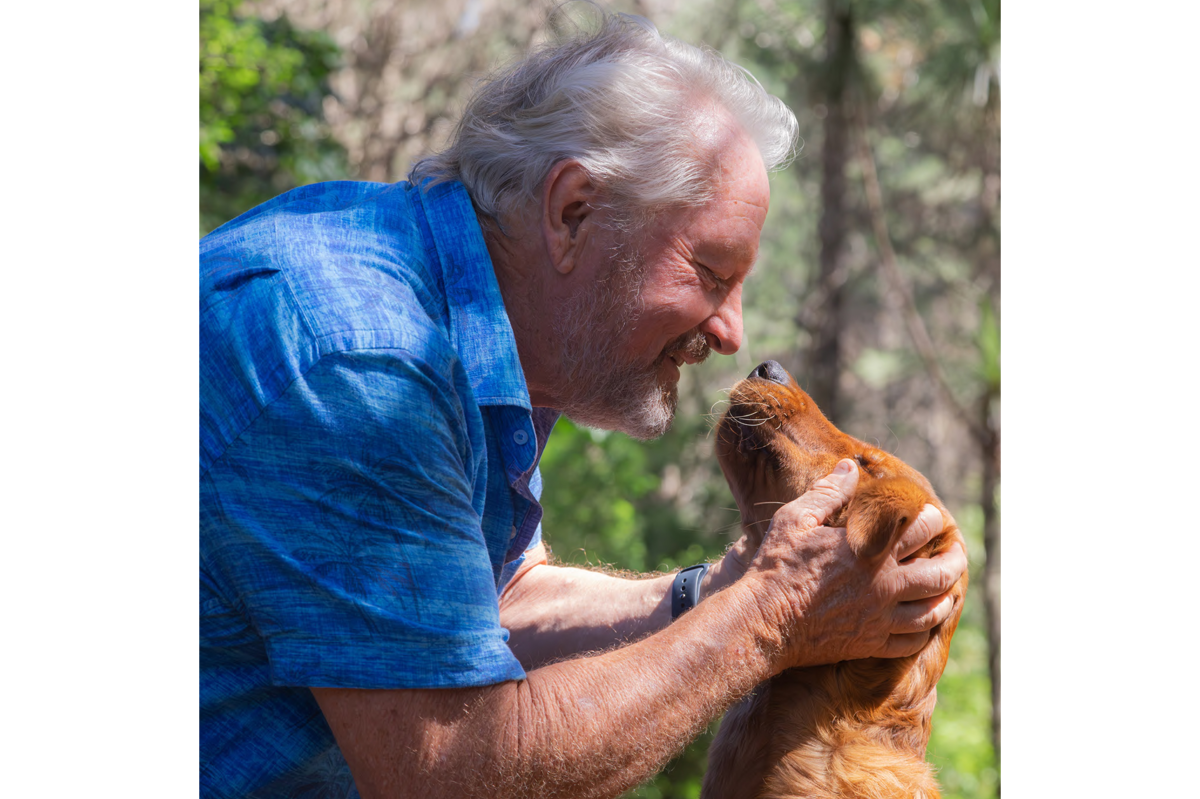
Mark Vette is a world-renowned Animal Behaviourist, Zoologist and Trainer. He brings together a unique combination of academic studies with 40 years of applied clinical animal behaviour consulting and treatment. Mark is a member of the International Association of Animal Behaviour Consultants. This article was written by Mark and the views expressed are his own.
Simple and proven toilet training for your new puppy
I always say that the most important aspect of training your pup is to have a really strong bond. It can be hard to bond with a pup that’s constantly soiling your house, so getting house training sorted early is one of the first things to tackle with a new pup!
The technique I’ve outlined below works for puppies and adult dogs that aren’t potty trained, but if you have a problem with your dog marking (called micturition, most common in entire males), that will require a different approach.
Origins of toileting behaviour
Wolf packs create a den for the mother to birth her puppies in, where she’ll reside after they’re born. Initially, infant puppies will toilet in the den and the mother will lick up the faeces and urine to keep the den clean (be grateful you aren’t a wolf!).
As the puppies approach 6 - 7 weeks old, their instinctual desire to not want to soil the den kicks in and they’ll naturally want to go outside or to the edge of the den and away from their sleeping space to toilet. This is called ‘nest site inhibition’. Puppies learn the difference between their den and the outside world through texture discrimination - the floor of their den feels different under their feet compared with the ground outside. Using this natural learning process, we can teach our dog to discriminate between indoor surfaces that are not appropriate for toileting on (such as carpet, tiles, lino or floor boards) and surfaces that are appropriate (newspaper, puppy pads or grass). This gradually teaches our dogs that inside the house is the “den”, and once the house is established as the den, the dog will not want to toilet inside.
How to set up for house training
By far the most important aspect of house training is having the right set up. It takes a bit of effort to arrange, but it’s well worth it in the long run.
The ideal set up is:
- A puppy pen laid with newspaper, puppy pads or astroturf.
- A small crate in the puppy pen, with soft bedding inside. The crate should be just big enough for your pup to fit in, around one and a half times the length of your pup. If you’re buying a bigger crate to last as your puppy grows, create a partition in it to reduce the size while your puppy is little.
- Food and water bowls inside the pen, close to the crate.
- Ideally, situate the pen by an external door or dog door with direct access to outside, so your puppy can learn to let themselves out. If you can’t have a dog door, Bunnings has a well designed dog door that locks into a sliding door without needing to cut into glass anywhere.
How to house train your pup
The more often your pup toilets on the grass, the more quickly they’ll learn that this is the appropriate toileting surface. So as a first port of call, take your pup outside regularly throughout the day, particularly after being shut in the crate, naps, play and meal times. Start with every 30-60 minutes, then you can increase as your pup builds bladder control.
During the day:
- Keep your puppy in the penned area when you are not directly supervising, ideally with free access outside. Your pup will avoid toileting in their bed, so will choose to go either on the newspaper/puppy pads/astroturf in the pen, or outside.
- Allow free time inside for 30-60 minutes only directly after toileting outside, under supervision.
- Give your pup 1-2 hours at a time shut in the crate during the day, with no access to the play pen. They will not want to soil their crate, so this helps them naturally learn to hold their bladder (it’s also a good enforced rest time, pups need tonnes of sleep). Take them straight outside when you let them out of the crate.
- Slowly shrink the area of newspaper inside the pen over a couple of weeks, moving the newspaper square closer to the external door, then eventually right outside. Your puppy should continue to go on the remaining newspaper as you fade it out to the grass area.
- If you do catch your pup in the act of toileting inside, immediately pop them on the grass until they’re finished their business. Don’t punish them, just do it calmly and quickly.
- Clean any indoor accidents with a mixture of 1/4 white vinegar mixed with 3/4 water to neutralise any urine smell so it doesn't attract them back to toilet in the same spot again.
During the night:
There are two good options overnight:
Option 1: Pop your pup to bed in the crate, but leave the crate door open so they can access the play pen. If they need to toilet in the night, they will do so on the newspaper in the play pen. This option is good if you don’t like getting up in the night! If you hear your pup whining at night, you can then just ignore it knowing they can toilet if needed.
Option 2: Pop your pup to bed in the crate and shut the crate door. In the first few weeks, pups can usually hold on for about 4 - 5 hours at night time so take them out to toilet on the grass before bed, 1-2 times overnight, and first thing in the morning. Every couple of nights, wait an extra 15 minutes before taking your pup out, so that you’re gradually extending their ability to hold on overnight.
The dos and don’ts!
DO:
- Always give your pup the chance to go outside. If they have to go inside, they will do so, so don’t blame them for that.
- Use a “be quick” command and click and reward your dog after they toilet in the right place. Wait until your dog has finished their business before rewarding.
DON’T:
- Never growl at your pup or rub their face in their urine or faeces. This will only confuse and scare them. If you catch them midway through, just pick them up and pop them outside calmly and encourage them to continue on the grass.
- Soiling is largely involuntary so punishment has little or no effect. In fact, because dogs urinate to indicate submission, if you as the dominant pack member tell them off for urinating they may urinate further - setting off a vicious cycle that just gets worse.
Good luck!
I hope your house training journey with your pup goes smoothly. Remember it’s normal to have a few accidents, nobody’s perfect. But the more consistent you are and strict with your pup’s access to the house, the more quickly you’ll nail it.
Always consult your vet on the best way to look after your pet. And to avoid unexpected costs, make sure your pet is insured.
Have a look at our pet insurance plans to choose the right insurance plan for your pet.
